Force acting on a particle moving in the x-y plane is →F=(y2ˆi+xˆj)N, x and y are in metre. As shown in figure, the particle moves from the origin O to point A (6m,6m). The figure shows three paths, OLA, OMA, and OA for the motion of the particle from O to A.
Now consider another situation. A force →F=(4ˆi+3ˆj)N acts on a particle of mass 2kg. The particle under the action of this force moves from the origin to a point A (4m,−8m). Initial speed of the particle, i.e., its speed at the origin is 2√6ms−1. Figure shows three paths for the motion of the particle from O to A.
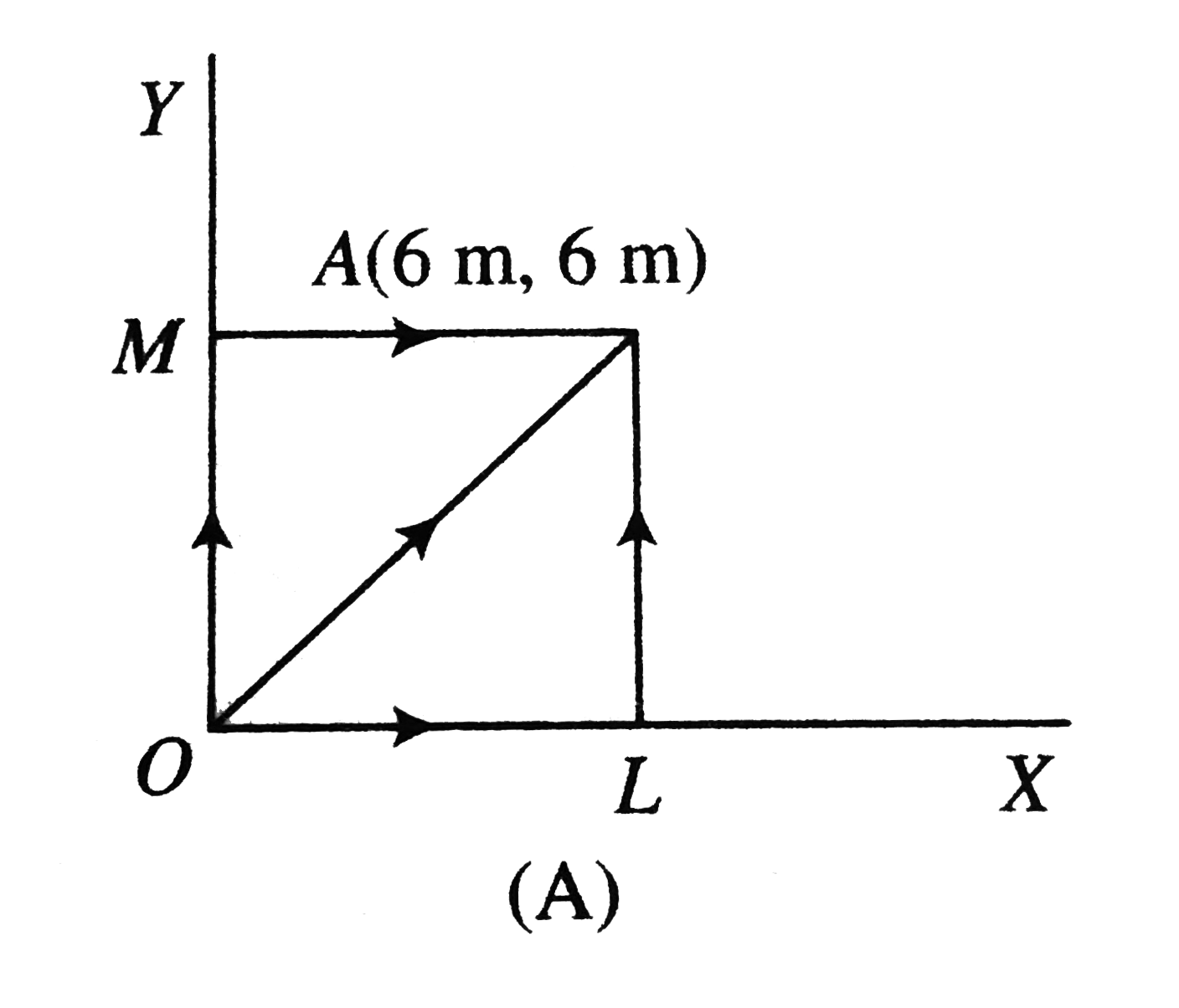
Speed of the particle at A will be nearly
(a) 4.0ms−1
(b) 2.8ms−1
(c) 3.6ms−1
(d) 5.6ms−1
The correct Answer is:A
a=(4ˆi+3ˆj)2
v2=u2+2ax
=4×6+2(4ˆi+3ˆj)2⋅(4ˆi−8ˆj)=2A−8=16
v=4ms−1
Topper's Solved these Questions
- BOOK - CENGAGE PHYSICSCHAPTER - WORK, POWER & ENERGYEXERCISE - Integer14videos
WORK, POWER & ENERGY
- BOOK - CENGAGE PHYSICSCHAPTER - WORK, POWER & ENERGYEXERCISE - Archives (sinble Correct )19videos
WORK, POWER & ENERGY
- BOOK - CENGAGE PHYSICSCHAPTER - WORK, POWER & ENERGYEXERCISE - Multiple Correct25videos
WORK, POWER & ENERGY
- BOOK - CENGAGE PHYSICSCHAPTER - VECTORSEXERCISE - Exercise Multiple Correct5videos
VECTORS
Similar Questions
Knowledge Check
- Question 1 - Select One
Force acting on a particle moving in the x-y plane is →F=(y2ˆi+xˆj)N, x and y are in metre. As shown in figure, the particle moves from the origin O to point A (6m,6m). The figure shows three paths, OLA, OMA, and OA for the motion of the particle from O to A.
Now consider another situation. A force →F=(4ˆi+3ˆj)N acts on a particle of mass 2kg. The particle under the action of this force moves from the origin to a point A (4m,−8m). Initial speed of the particle, i.e., its speed at the origin is 2√6ms−1. Figure shows three paths for the motion of the particle from O to A.
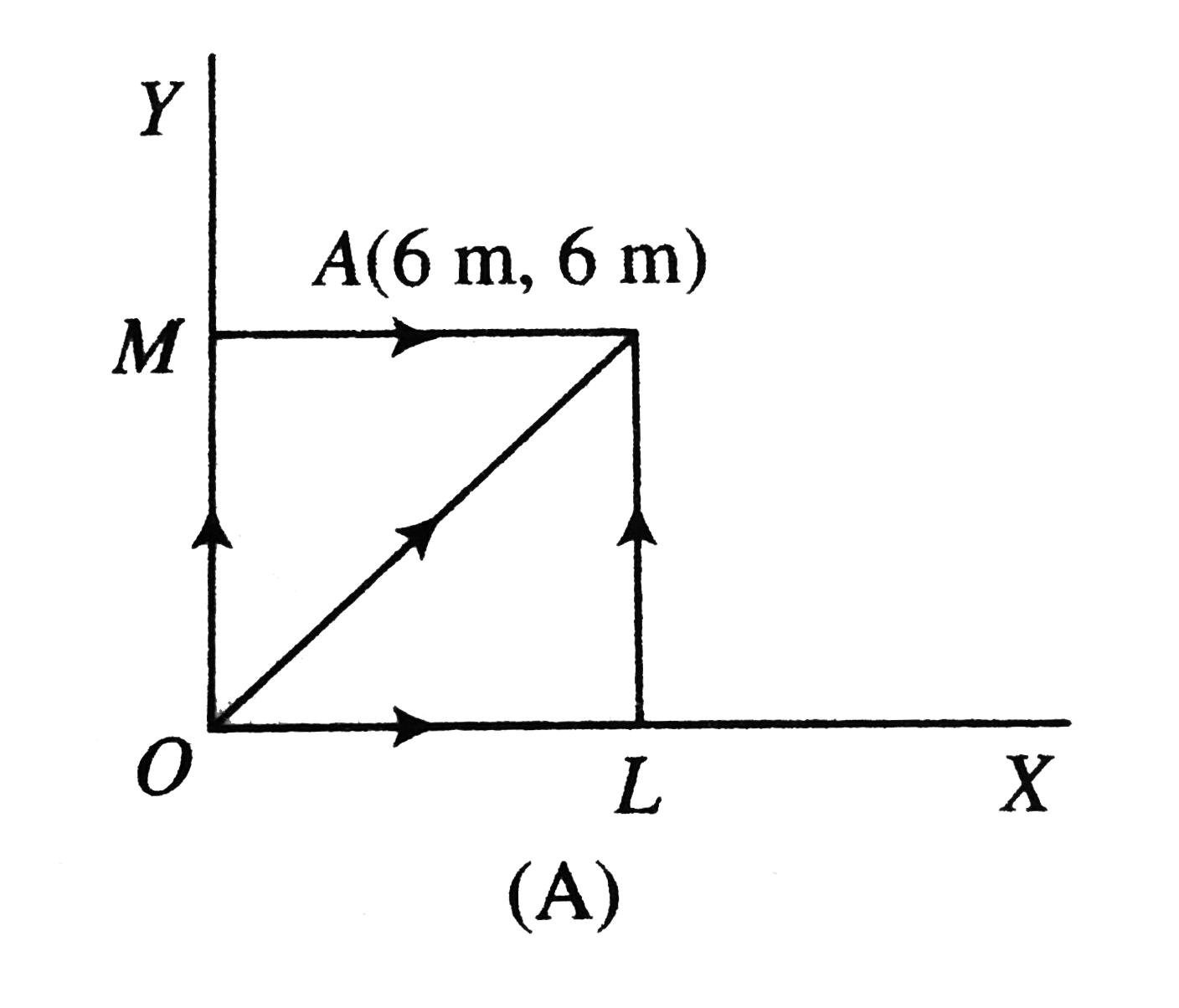
If the potential energy at O is 16J, the potential energy at A will beA(a) 14.5JB(b) 32JC(c) 24JD(d) 40J - Question 2 - Select One
Force acting on a particle moving in the x-y plane is →F=(y2ˆi+xˆj)N, x and y are in metre. As shown in figure, the particle moves from the origin O to point A (6m,6m). The figure shows three paths, OLA, OMA, and OA for the motion of the particle from O to A.
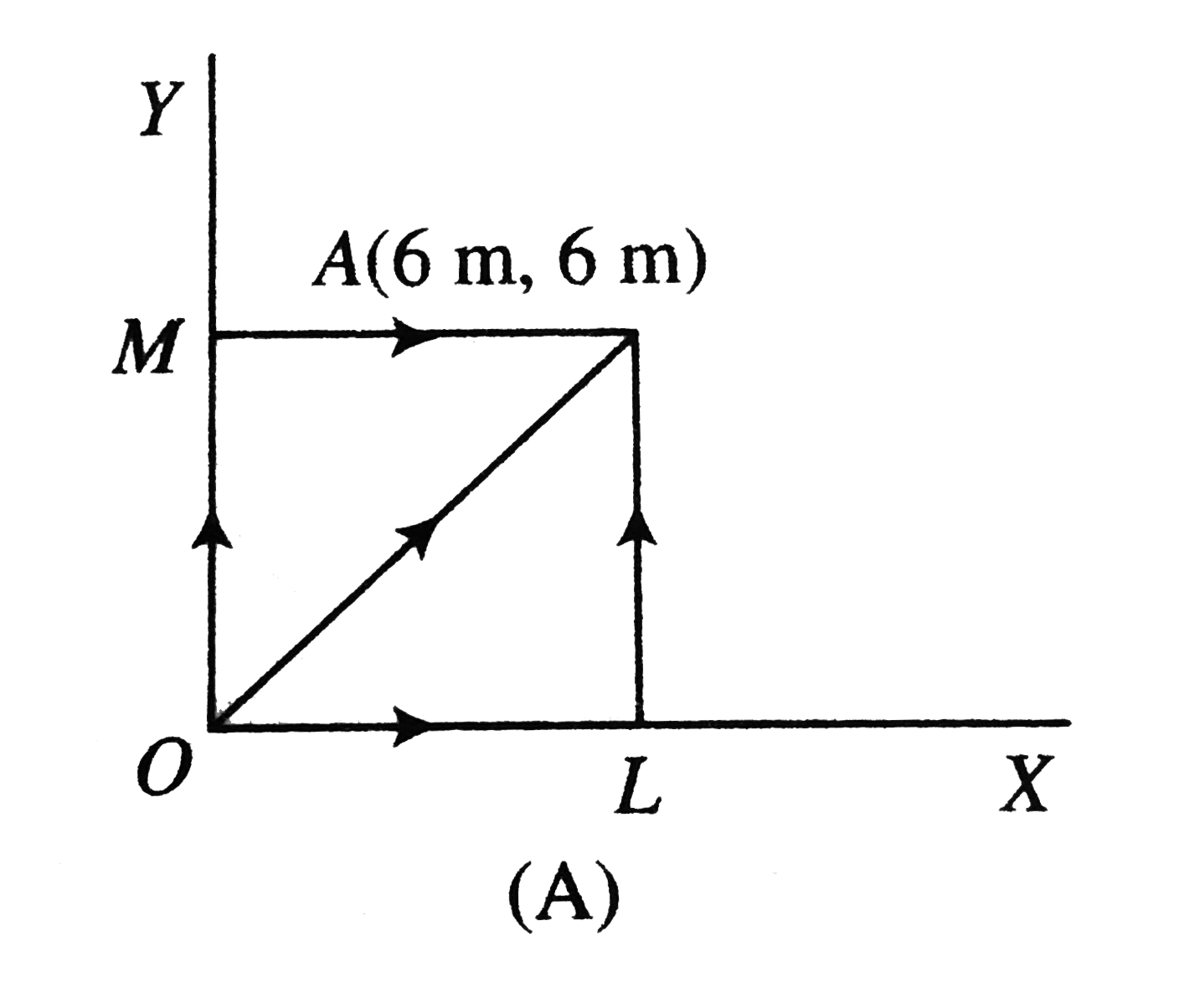
Work done for motion along path OA is nearly
 A(a) 383JB(b) 90JC(c) 180JD(d) None of these
A(a) 383JB(b) 90JC(c) 180JD(d) None of these - Question 3 - Select One
Force acting on a particle moving in the x-y plane is →F=(y2ˆi+xˆj)N, x and y are in metre. As shown in figure, the particle moves from the origin O to point A (6m,6m). The figure shows three paths, OLA, OMA, and OA for the motion of the particle from O to A.
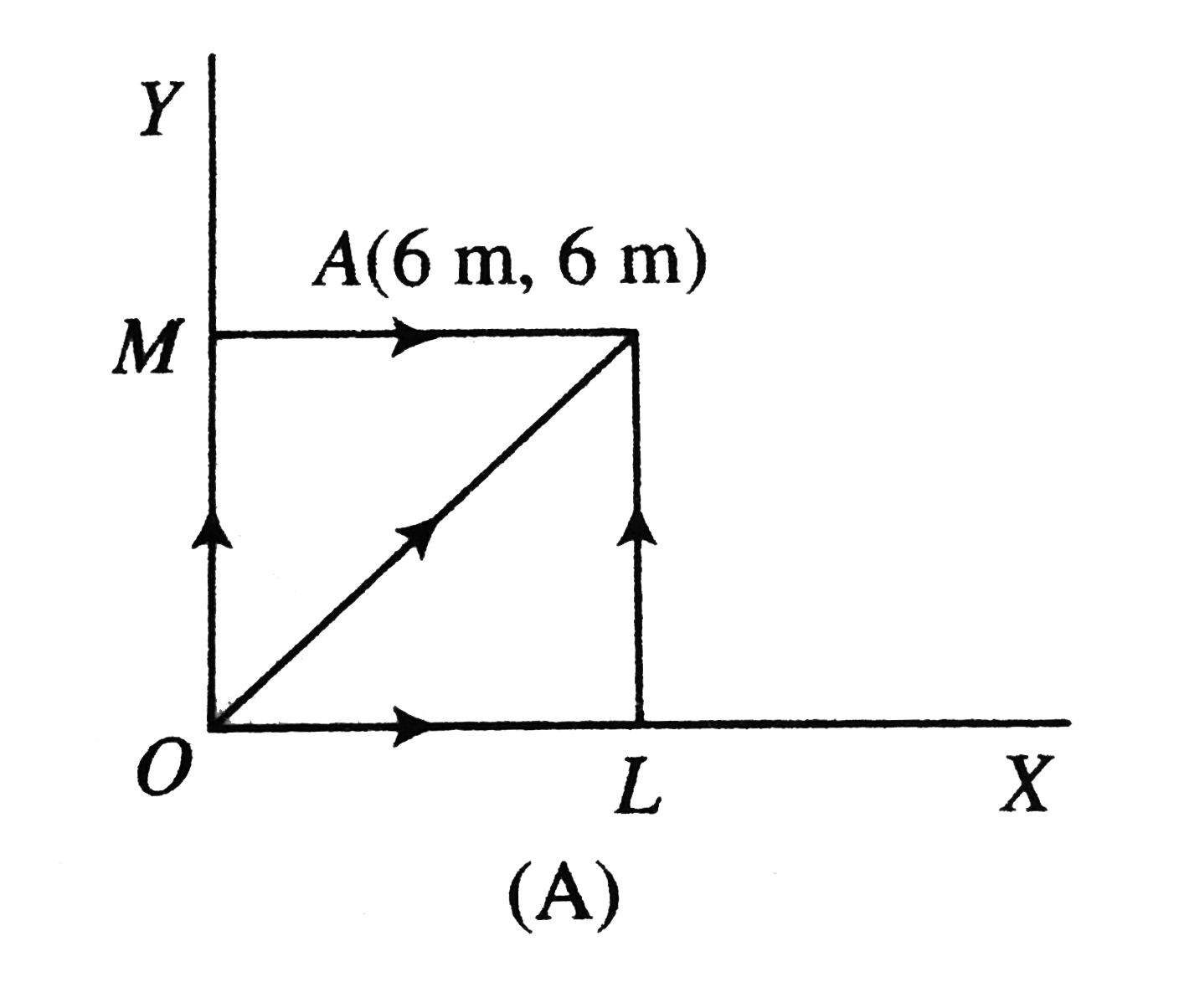
Which of the following is correct?A(a) There is equal probability for the force being conservative or non-conservative.B(b) Conservative or non-conservative nature of force cannot be predicted on the basis of given information.C(c) The given force is non-conservative.D(d) The given force is conservative.
Force acting on a particle moving in the x−y plane is →F=(y2ˆi+xˆj)N,x and y are in metre. As shown in fig. the particle moves from the origin O to point A(6m,6m). The figure shows three paths, OLA,OMA and OA for the motion of the particle from O to A.
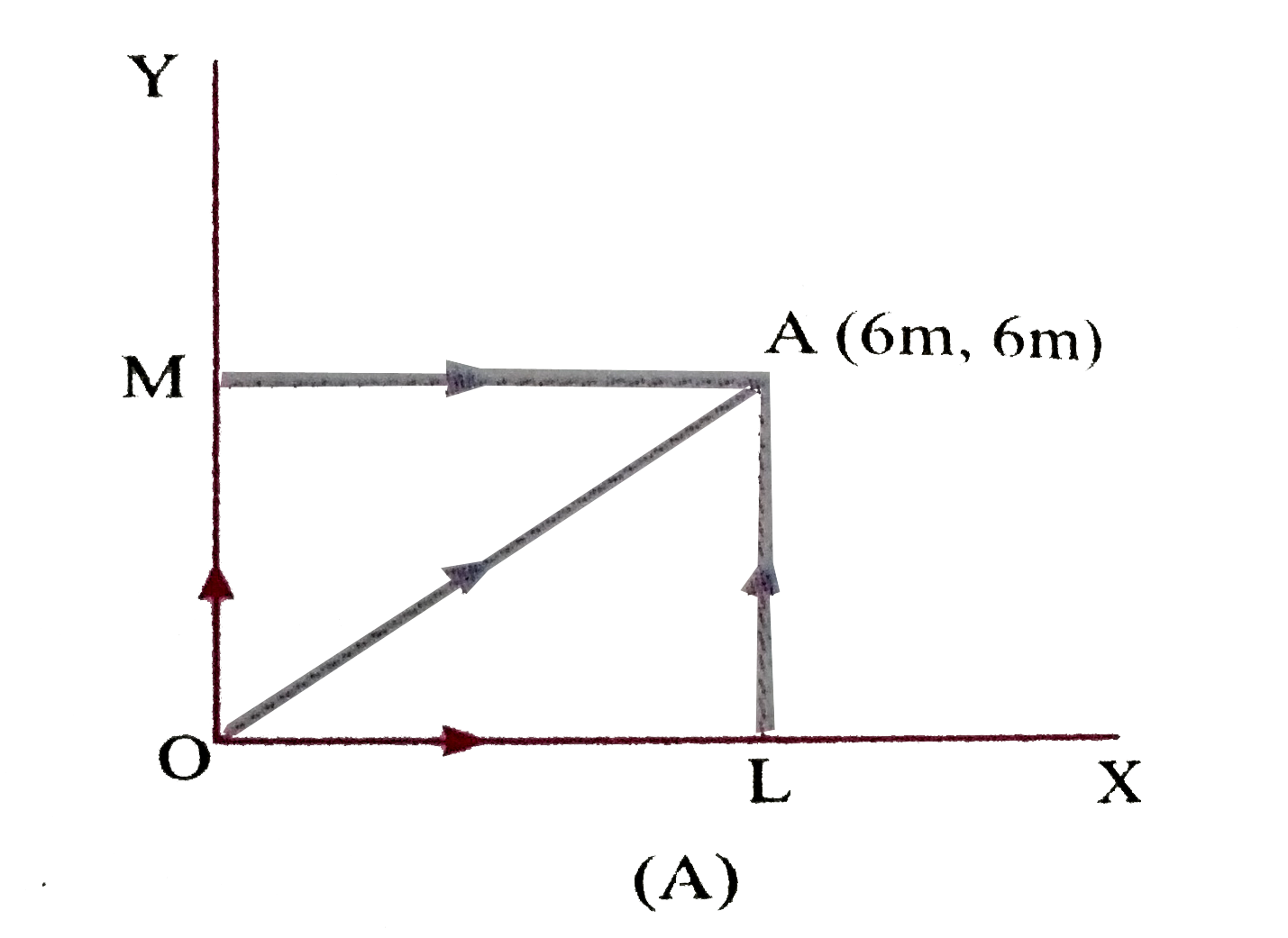
Work done for motion along path OA is nearlyView SolutionForce acting on a particle moving in the x−y plane is →F=(y2ˆi+xˆj)N,x and y are in metre. As shown in fig. the particle moves from the origin O to point A(6m,6m). The figure shows three paths, OLA,OMA and OA for the motion of the particle from O to A.

Along which of the three paths is the work done maximum.View SolutionA force acting on particle is given by →F=(3x2ˆi+4yˆj)N. The change in kinetic energy of particle as it moves from (0,2m) to (1m,3m) is
View SolutionA particle moves in the x−y the accoding to the equatio, r=(ˆi+2ˆj)Acosωt. The motion of the particle is
View SolutionA uniform force of (3ˆi+ˆj) N acts on a particle of mass 2kg. Hence, the particle is displaced from position (2ˆi+ˆk)m to position (4ˆi+3ˆj−ˆk)m. The work done by the force on the particle is
View Solution

